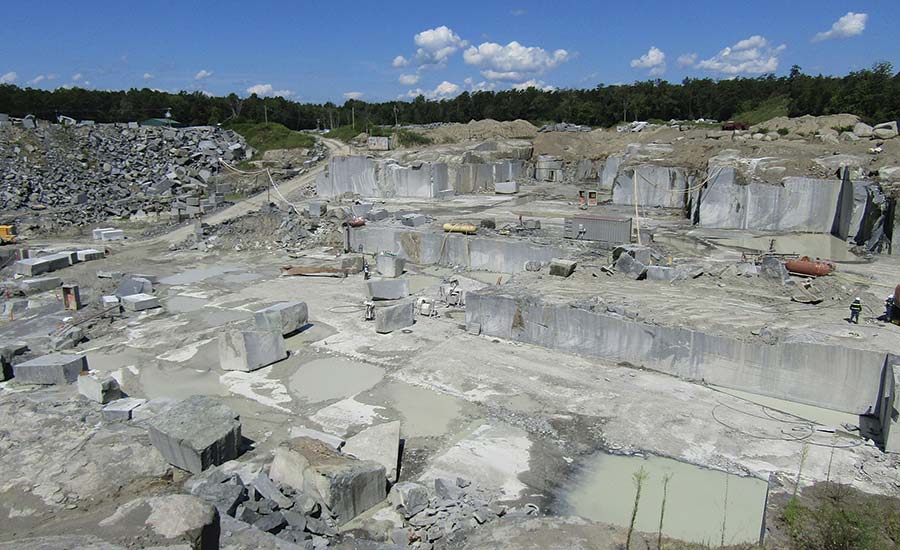Journeying Via Granite Quarries in South Africa: A Visual Odyssey
Journeying Via Granite Quarries in South Africa: A Visual Odyssey
Blog Article
Discovering the Rich Background and Lasting Practices of Granite Quarrying
As we stand on the precipice of uncovering the detailed tapestry of granite quarrying, a journey with time discloses not simply the physical act of removing stone however also the cultural and historic significance woven into the very fabric of this method. From the old origins that laid the foundation for modern quarrying methods to the lasting techniques that are shaping the future of this market, each carve mark on granite surfaces narrates waiting to be unearthed (granite quarries in south africa). The heritage of granite quarrying extends far past simple extraction; it is a testimony to human ingenuity, resilience, and the long-lasting attraction of this impressive rock
Ancient Origins of Granite Quarrying
Going back to old worlds, the method of quarrying granite has actually been an indispensable part of human background and architectural innovation. The earliest evidence of granite quarrying go back to ancient Egypt, where massive pyramids and complex sculptures were crafted from this durable stone. The Egyptians made use of primitive tools to extract granite blocks from quarries, showcasing the significance of this material in their monumental buildings.
Progressing in history, the Greeks also made considerable contributions to the quarrying of granite. The Greeks utilized granite in numerous architectural marvels, such as holy places and sculptures, demonstrating their skill in shaping and carving this durable stone. The Romans even more fine-tuned the techniques of quarrying granite, utilizing innovative tools like chisels and hammers to remove and form granite for their famous frameworks.
With the centuries, the technique of quarrying granite has evolved, with contemporary technologies improving performance while preserving the classic appeal of this natural stone - granite quarries in south africa. From ancient worlds to modern building contractors, the tradition of granite quarrying remains to shape our world
Advancement of Quarrying Strategies
The development of quarrying techniques has actually been marked by a constant development towards higher efficiency and accuracy in extracting granite. Early quarrying techniques entailed manual labor with standard devices such as knives, hammers, and wedges to remove granite blocks from the earth.
Advancements in computer-controlled equipment and 3D modeling have enhanced quarrying operations, leading to marginal environmental influence and improved sustainability practices. As the demand for granite continues to climb, the advancement of quarrying strategies continues to be important to conference industry requires effectively and sustainably.
Social Importance of Granite
Granite holds an extensive cultural relevance throughout various human beings because of its enduring visibility in building work of arts and admired monuments. From the impressive pyramids of Egypt to the detailed makings of the Angkor Wat temple in Cambodia, granite has actually been a product of choice for revealing grandeur and longevity in social heritage. In ancient Rome, granite columns adorned temples and public buildings, representing toughness and permanence. The social importance of granite extends past try here its physical attributes; it symbolizes strength, security, and timelessness, making it a symbol of enduring heritages and practices.

Lasting Practices in Quarrying
In the middle of the abundant background of granite quarrying and its social relevance exists a growing emphasis on sustainable techniques within the sector. As environmental awareness and concerns about source depletion have heightened internationally, the quarrying sector has increasingly accepted lasting methods to decrease its influence on the environment and bordering neighborhoods.

In addition, reclamation and rehab of quarry websites post-extraction are important to lasting techniques. By recovering quarried areas to an all-natural or valuable state, such as creating wild animals habitats or entertainment spaces, quarriers site web can offset the environmental footprint of their procedures and add favorably to the regional ecological community.
Heritage of Granite Quarrying
With a historical backdrop steeped in craftsmanship and industrial development, what withstanding effect has granite quarrying left on the landscape of contemporary culture? The legacy of granite quarrying transcends simple removal practices; it has formed architectural wonders, metropolitan landscapes, and cultural heritage worldwide. The durable nature of granite has actually made it a preferred choice for monoliths, buildings, and infrastructure, standing as a testament to the ability and artistry of quarry employees across generations.
In addition, the financial impact of granite quarrying can not be overlooked. The industry proceeds to offer employment opportunities and drive neighborhood economic situations in regions where granite removal prevails. It has also spurred technical developments in quarrying strategies and devices, bring about more effective and sustainable techniques.
In terms of sustainability, the heritage of granite quarrying includes efforts to reduce ecological impacts via improvement tasks and accountable source monitoring. By stabilizing financial passions with environmental stewardship, the sector strives to ensure that future generations can remain to profit from this enduring natural deposit.
Final Thought

Report this page